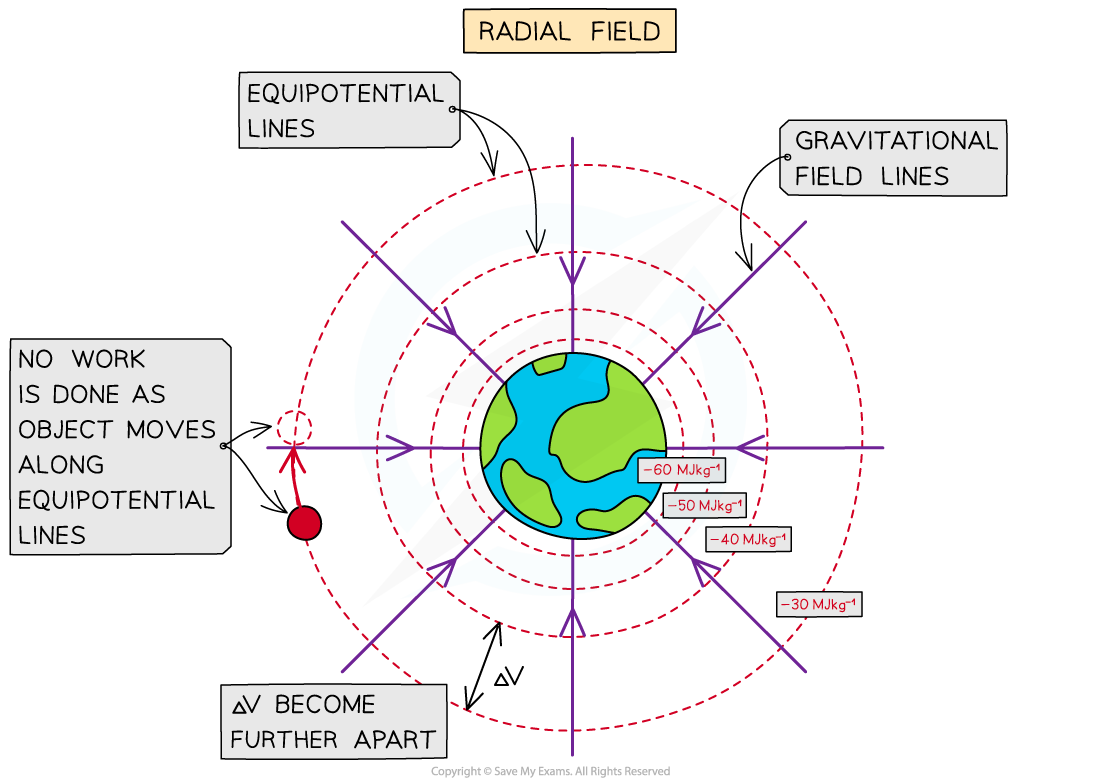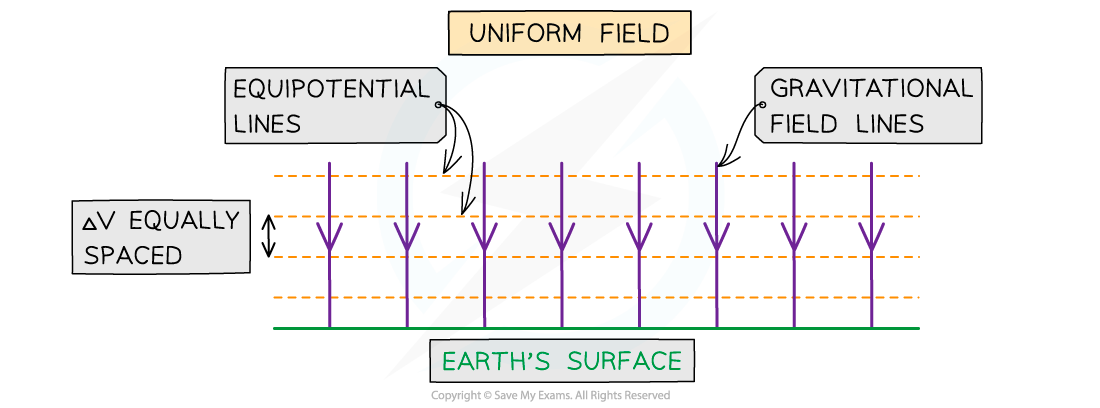Gravitational Equipotential Surfaces (DP IB Physics): Revision Note
Gravitational Equipotential Surfaces
Equipotential lines (when working in 2D) and surfaces (when working in 3D) join together points that have the same gravitational potential
These are always:
Perpendicular to the gravitational field lines in both radial and uniform fields
Represented by dotted lines (unlike field lines, which are solid lines with arrows)
In a radial field (e.g. a planet), the equipotential lines:
Are concentric circles around the planet
Become further apart further away from the planet
Remember: radial field is made up of lines which follow the radius of a circle
In a uniform field (e.g. near the Earth's surface), the equipotential lines are:
Horizontal straight lines
Parallel
Equally spaced
Remember: uniform field is made up of lines which are a uniform distance apart
Potential gradient is defined by the equipotential lines
No work is done when moving along an equipotential line or surface, only between equipotential lines or surfaces
This means that an object travelling along an equipotential doesn't lose or gain energy and ΔV = 0


Gravitational equipotential lines in a non-uniform and uniform gravitational field
Examiner Tips and Tricks
Remember equipotential lines do not have arrows, since they have no particular direction and are not vectors.
Make sure to draw any straight lines with a ruler or a straight edge.

Unlock more, it's free!
Did this page help you?